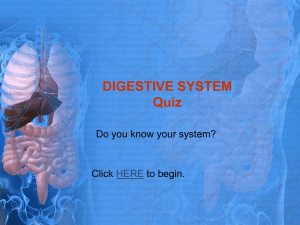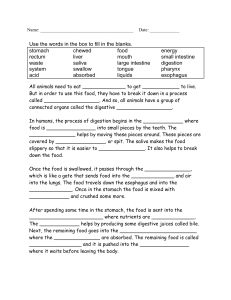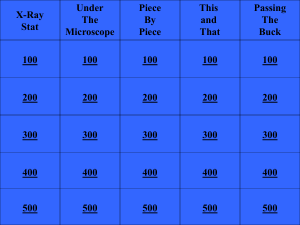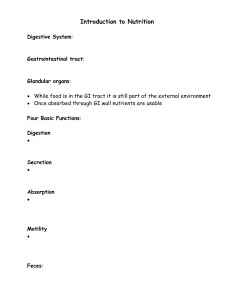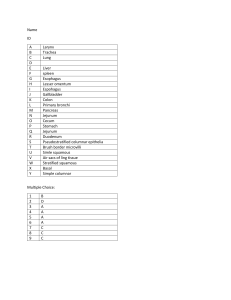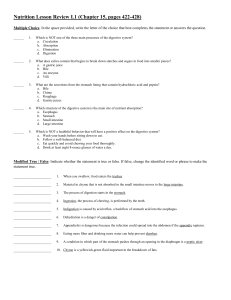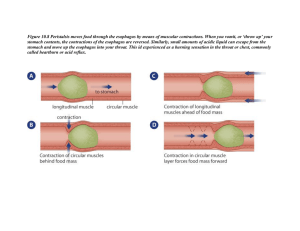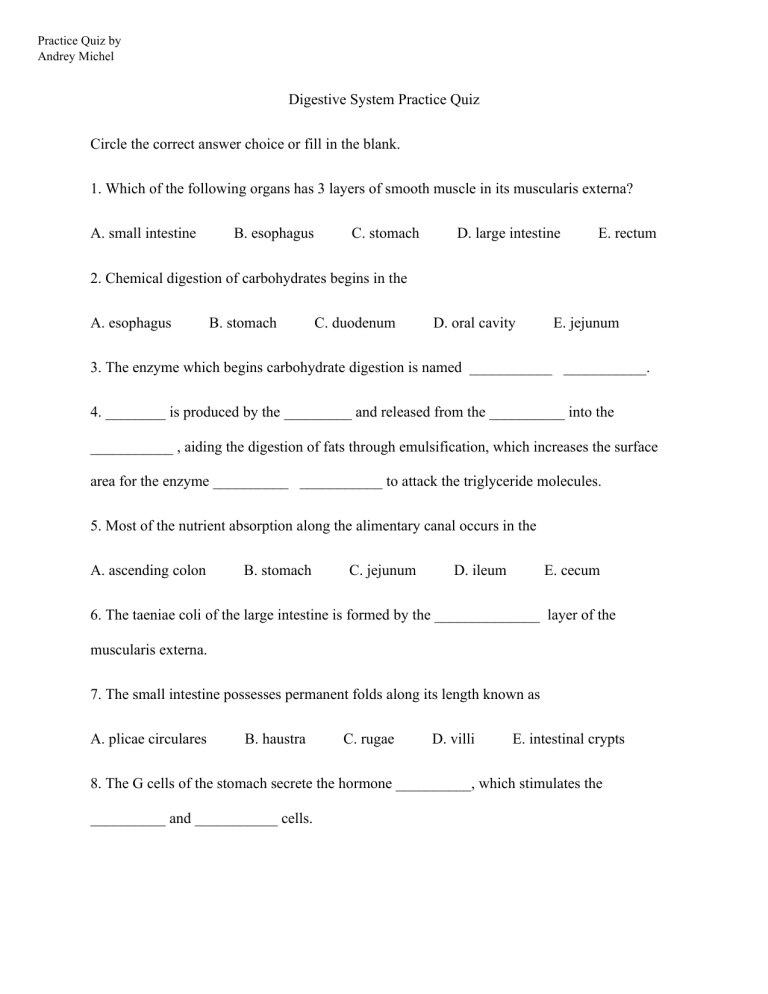
Practice Quiz by Andrey Michel Digestive System Practice Quiz Circle the correct answer choice or fill in the blank. 1. Which of the following organs has 3 layers of smooth muscle in its muscularis externa? A. small intestine B. esophagus C. stomach D. large intestine E. rectum 2. Chemical digestion of carbohydrates begins in the A. esophagus B. stomach C. duodenum D. oral cavity E. jejunum 3. The enzyme which begins carbohydrate digestion is named ___________ ___________. 4. ________ is produced by the _________ and released from the __________ into the ___________ , aiding the digestion of fats through emulsification, which increases the surface area for the enzyme __________ ___________ to attack the triglyceride molecules. 5. Most of the nutrient absorption along the alimentary canal occurs in the A. ascending colon B. stomach C. jejunum D. ileum E. cecum 6. The taeniae coli of the large intestine is formed by the ______________ layer of the muscularis externa. 7. The small intestine possesses permanent folds along its length known as A. plicae circulares B. haustra C. rugae D. villi E. intestinal crypts 8. The G cells of the stomach secrete the hormone __________, which stimulates the __________ and ___________ cells. 9. The _________ cells secrete _________, the enzyme precursor which begins the chemical digestion of protein. 10. Protein digestion in the stomach requires the activation of __________ by ____________ _______, which is secreted by the ________ cells. 11. The _________ cells also secrete __________ _________ which facilitates the absorption of vitamin B12 in the ileum. 12. The specific tissue type of the submucosa is A. areolar CT B. dense irregular CT C. reticular CT D. smooth muscle E. adipose 13. The muscularis externa of the upper third of the esophagus has primarily A. skeletal muscle B. smooth muscle C. both skeletal and smooth muscle 14. The three major enzymes secreted by the pancreas into the duodenum are ____________________, __________________, and _________________(inactive form). 15. Which of the following structures secures the small intestine to the posterior abdominal wall? A. greater omentum B. lesser omentum C. mesocolon D. serosa E. mesentery proper 16. The hormone _____________ stimulates the release of pancreatic enzymes, buffers, and bile. 17. Nutrient-rich, oxygen-poor blood arrives at the liver through the _______________________ while oxygen-rich blood arrives via the _______________________. 18. In which region of the gastrointestinal tract are Peyer’s patches most common? A. stomach B. duodenum C. jejunum D. ileum E. sigmoid colon Answer Key 1. C. stomach 2. D. oral cavity 3. salivary amylase 4. Bile, liver/hepatocytes, gallbladder, duodenum, pancreatic lipase 5. C. jejunum 6. longitudinal 7. A. plicae circulares 8. gastrin, chief, parietal 9. chief, pepsinogen 10. pepsinogen, hydrochloric acid, parietal 11. parietal, intrinsic factor 12. B. dense irregular CT 13. A. skeletal muscle 14. pancreatic lipase, pancreatic amylase, trypsinogen 15. E. mesentery proper 16. cholecystokinin (CCK) 17. hepatic portal vein, hepatic artery proper 18. D. ileum
